Rue Daguerre - a hoppin' Paris place
Rue Daguerre is always a hoppin’ place, but on Sundays it really comes to life. It’s a magnet for Parisians and tourists looking for a good lunch or really choice groceries – today we bought slices of an outstanding rolled veal roast, from a butcher who normally deals only in poultry. It was a good dinner.
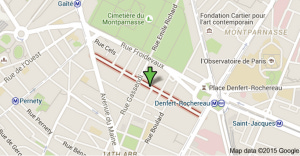
Google.fr
Rue Daguerre is in the 14th arrondissement, south of the major attractions, one of the middle-class districts without a lot of tourist interest. It is only 630 meters long, and its anchor at the east end is the wide Avenue du Général Leclerc. A grateful France renamed it in 1948 in honor of the French general who led his armored division up the avenue seventy-one years ago during the fight for the Liberation of Paris (August 1944). Today there's an interesting museum to his life above Gare Montparnasse.

View down Rue Daguerre
Until the 1990s the first block of the rue, the most active part, was a covered shopping street. Today it’s a mostly pedestrian area with a half-dozen restaurants, a couple of vegetable vendors (primeurs, who only sell the prime stuff), a fancy honey shop, a little general store where you can find just about anything, two grocery stores and a wine merchant. Plus thousands of people.
It is part of Montparnasse. The west end of the rue is only a short walk from the Montparnasse railway station (Gare Montparnasse). Hemingway’s haunts aren’t far away, Simone de Beauvoir lived nearby, and Calder had a studio on one of the side streets. The apartment we rented this year has a view across Montparnasse cemetery, an oasis of green in city of stone. And there’s much more in the neighborhood.
Café Daguerre
One of the traditional go-to spots on the rue is Café Daguerre, which dominates the corner. It serves a great breakfast (either French or “English,” depending on whether you want an omelet; I had one, with ham). It seems to be open all the time, and there’s very little turnover among waiters. This is our fifth year to stay in the 14th and the faces seem to be pretty much the same.
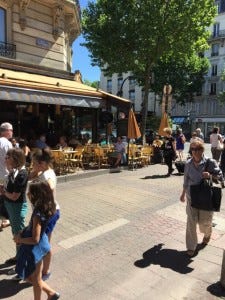
Cafe Daguerre
Café Daguerre is where I learned to appreciate the “café gourmand,” a platter of small desserts with an expresso. It was developed a decade ago as a way to speed up lunch, but I view it as my chance to sample three or four different desserts at the same time.
Rue Daguerre was named after Louis Daguerre, who introduced the daguerreotype photograph in the early 1800s. He’s considered one of the fathers of modern photography and is one of the few luminaries whose names are engraved on the Eiffel Tower.
Transportation hub
The great square just above Rue Daguerre, Place Denfert-Rochereau (Google images), is one of the city’s major transportation hubs. It provides access to two metro lines, the RER B suburban train (which goes straight to Degaulle airport), and a half-dozen city buses.
It’s the entrance to the Catacombs, the ossuaries moved to the old quarries under the Left Bank when the Right Bank cemeteries burst their banks and threatened the city with disease and unpleasantness. (Most of Paris was built from stone quarried under the city, but that's another story.)
Seventy feet under the square the bunker from which the Résistance fight for the Liberation 71 years ago was directed; it was built before the war as a precaution and the Germans seem not to have found out about it. My latest information is that it’s now used for temperature-controlled plant science.
Photo Gallery: Sunday morning on Rue Daguerre
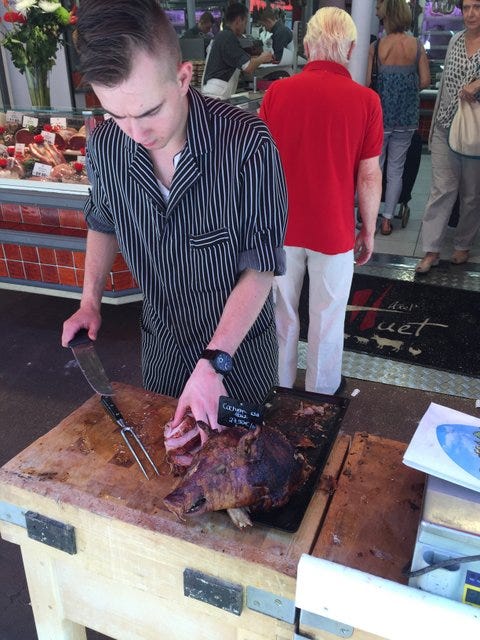
Butcher wrapping our veal. No one had taken the pig's head
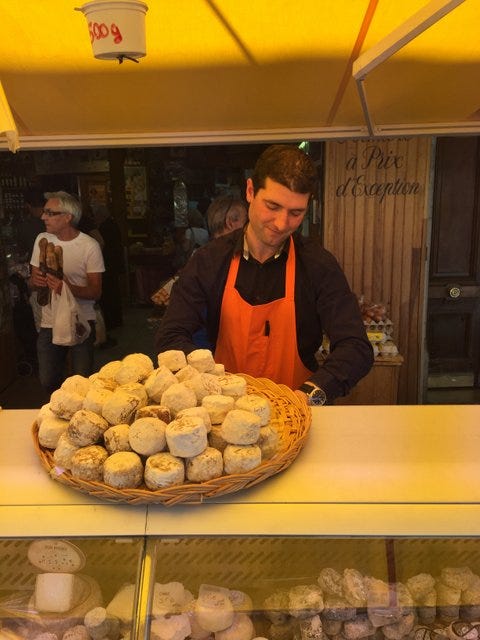
Cheese merchant
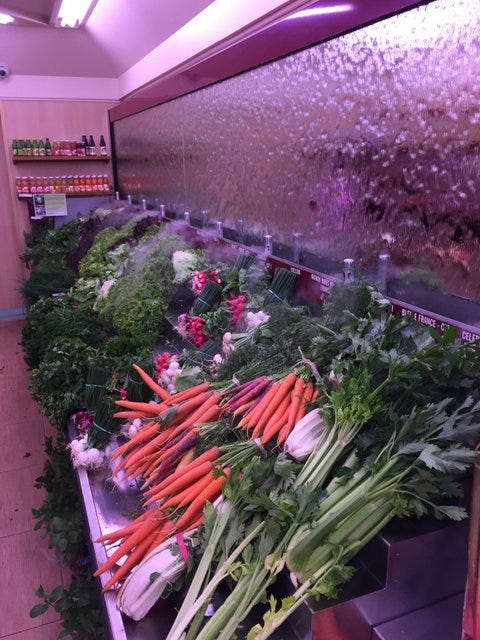
A primeur. Note the cooling spray on the vegetables, with water running down the mirror behind them
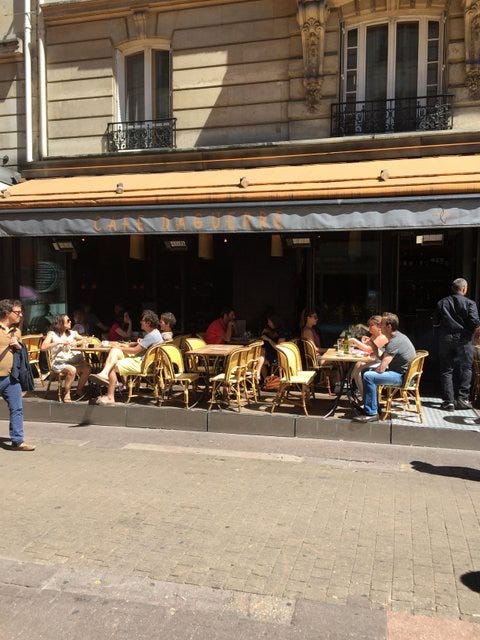
Café Daguerre
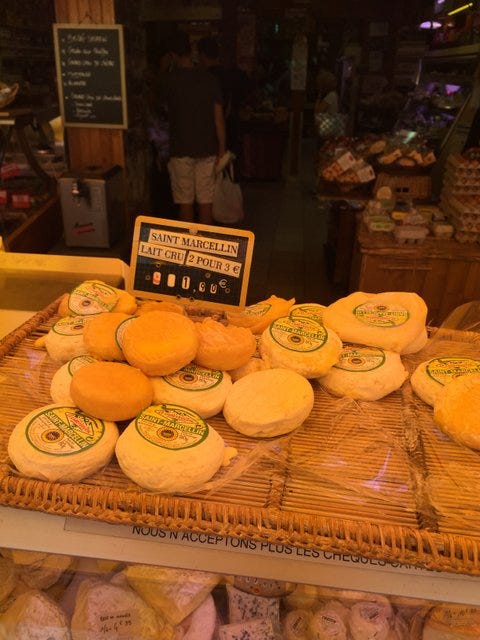
Another offering from the cheese merchant. This one is good, I guarantee it
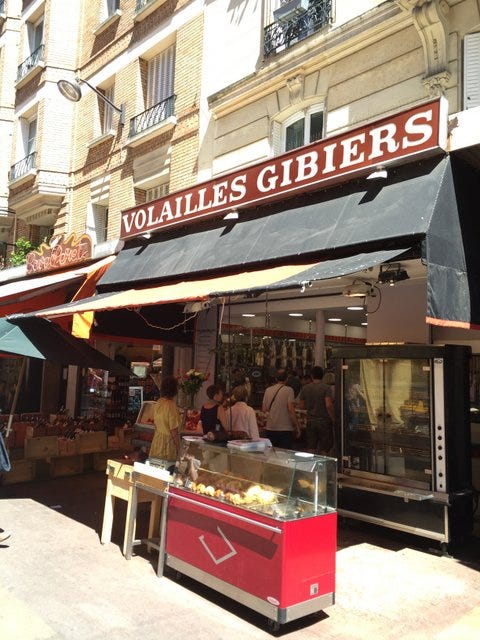
The butcher who sold us the slices of roast veal


